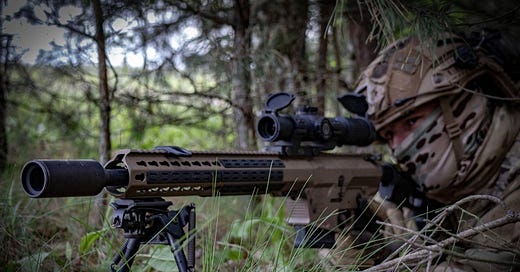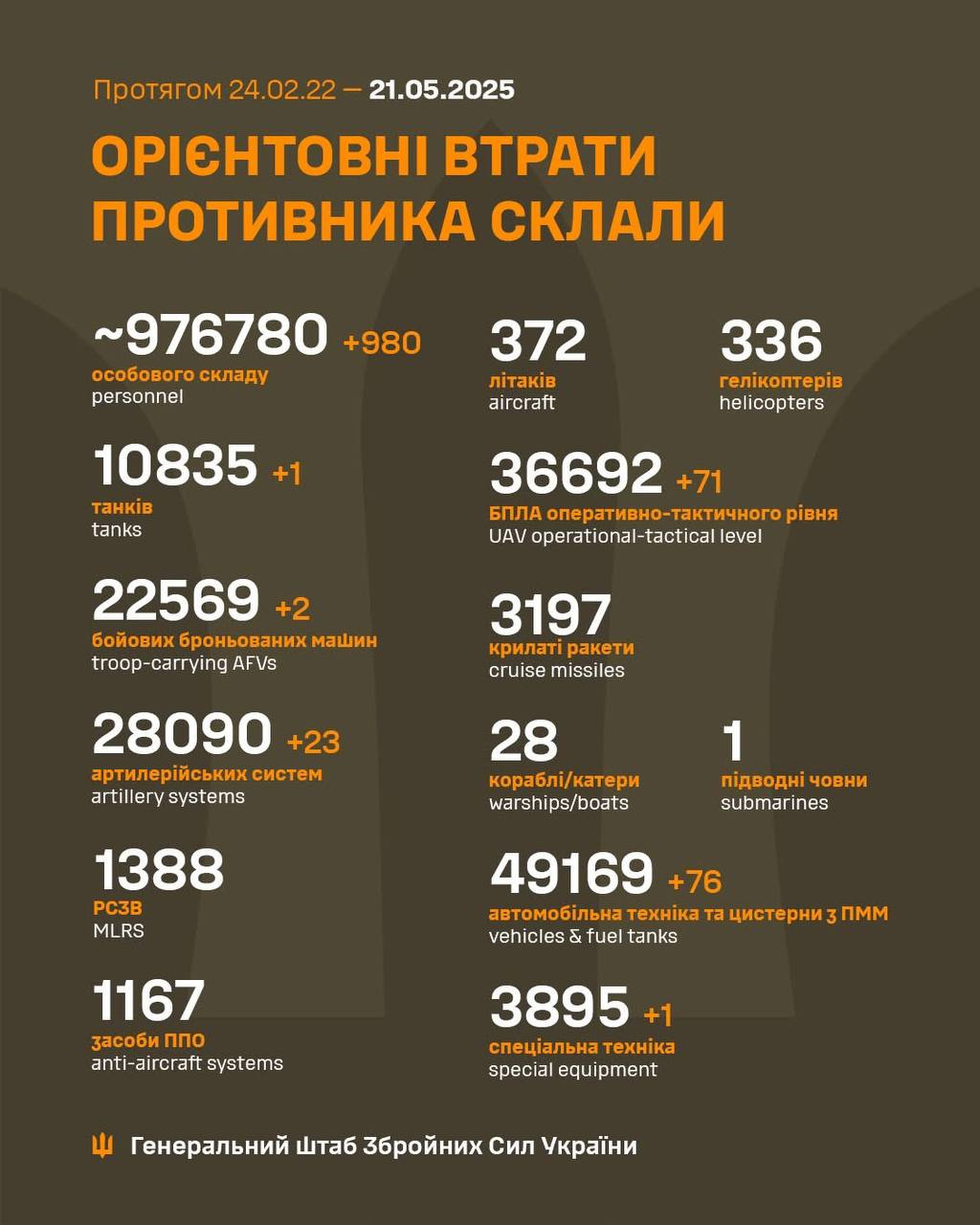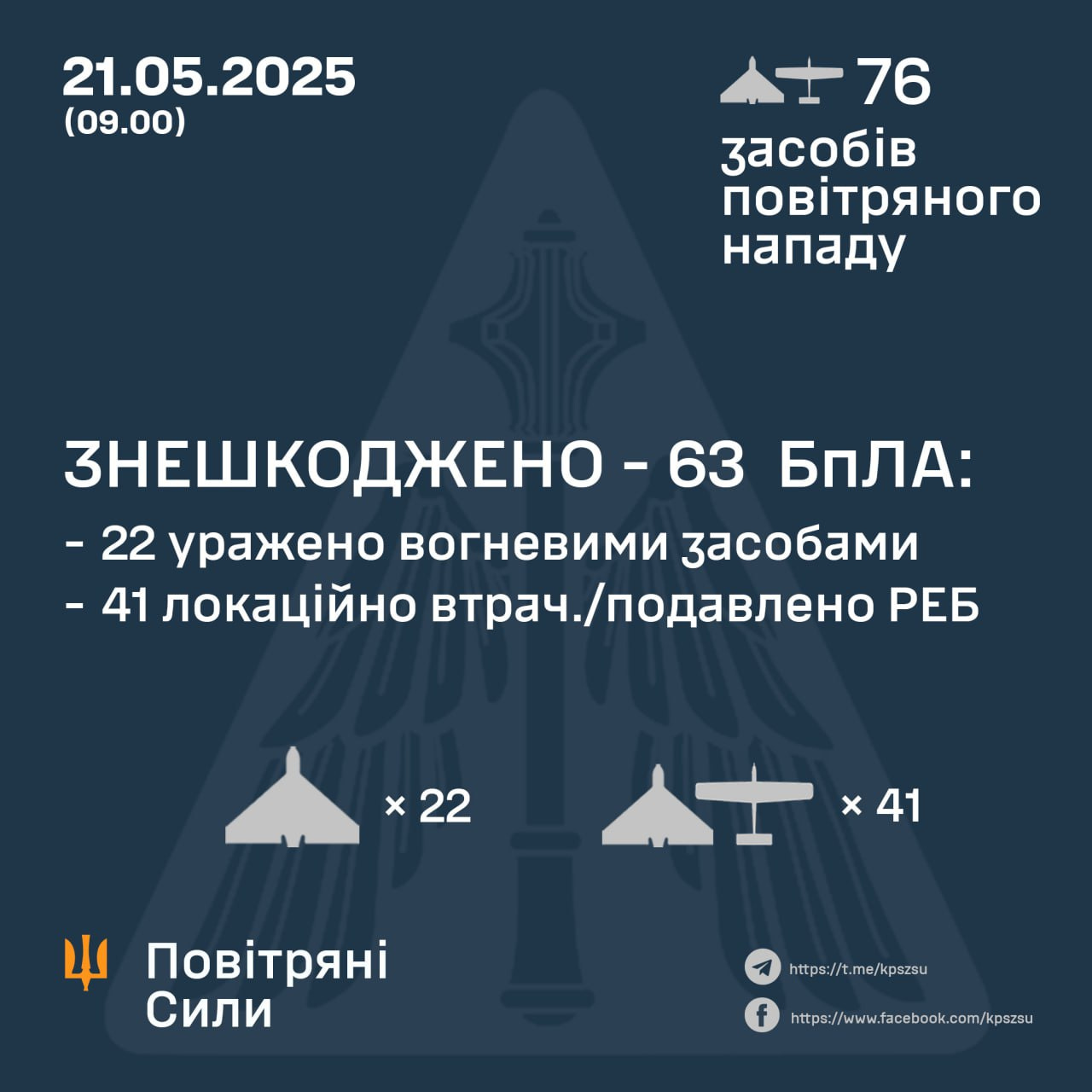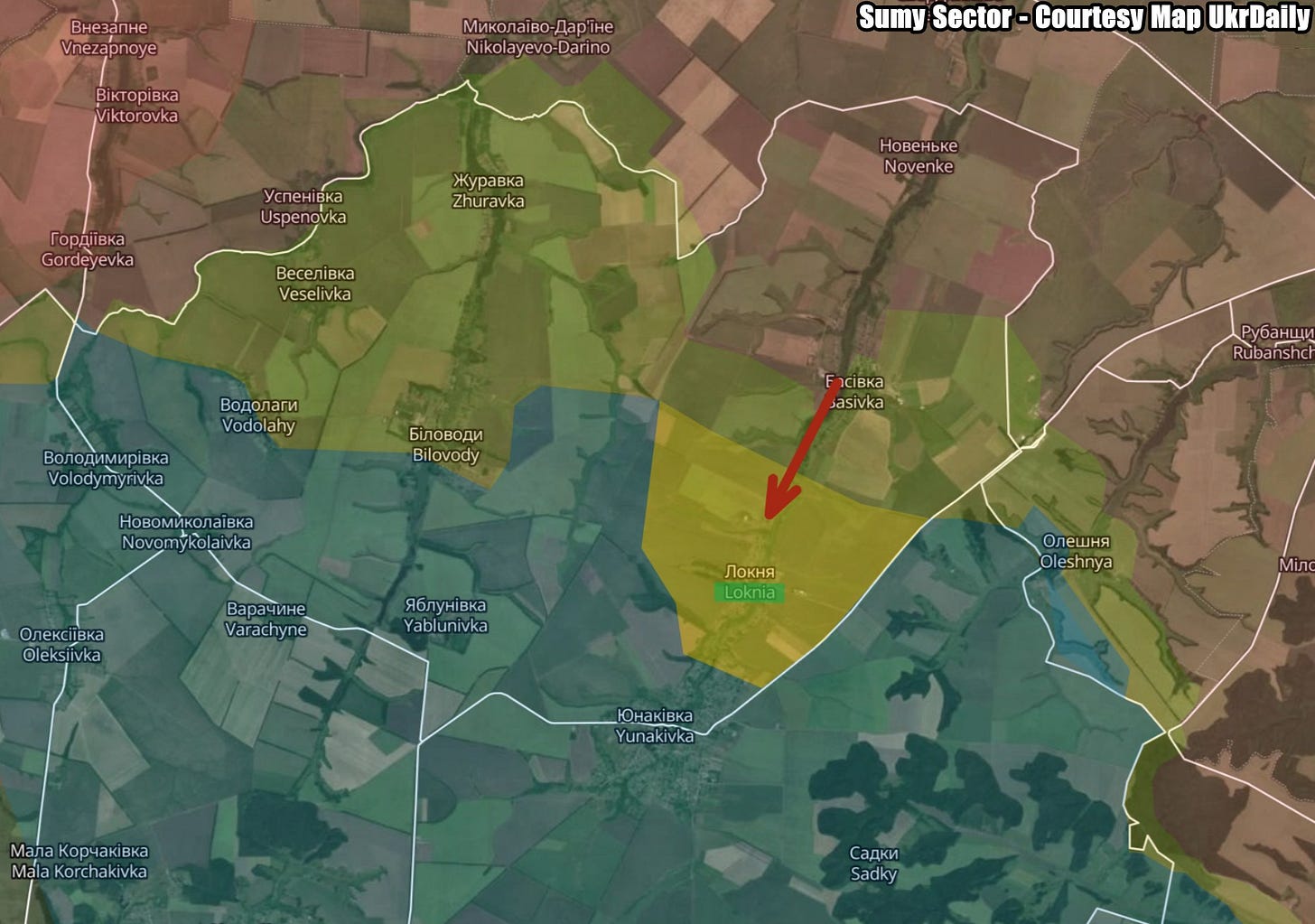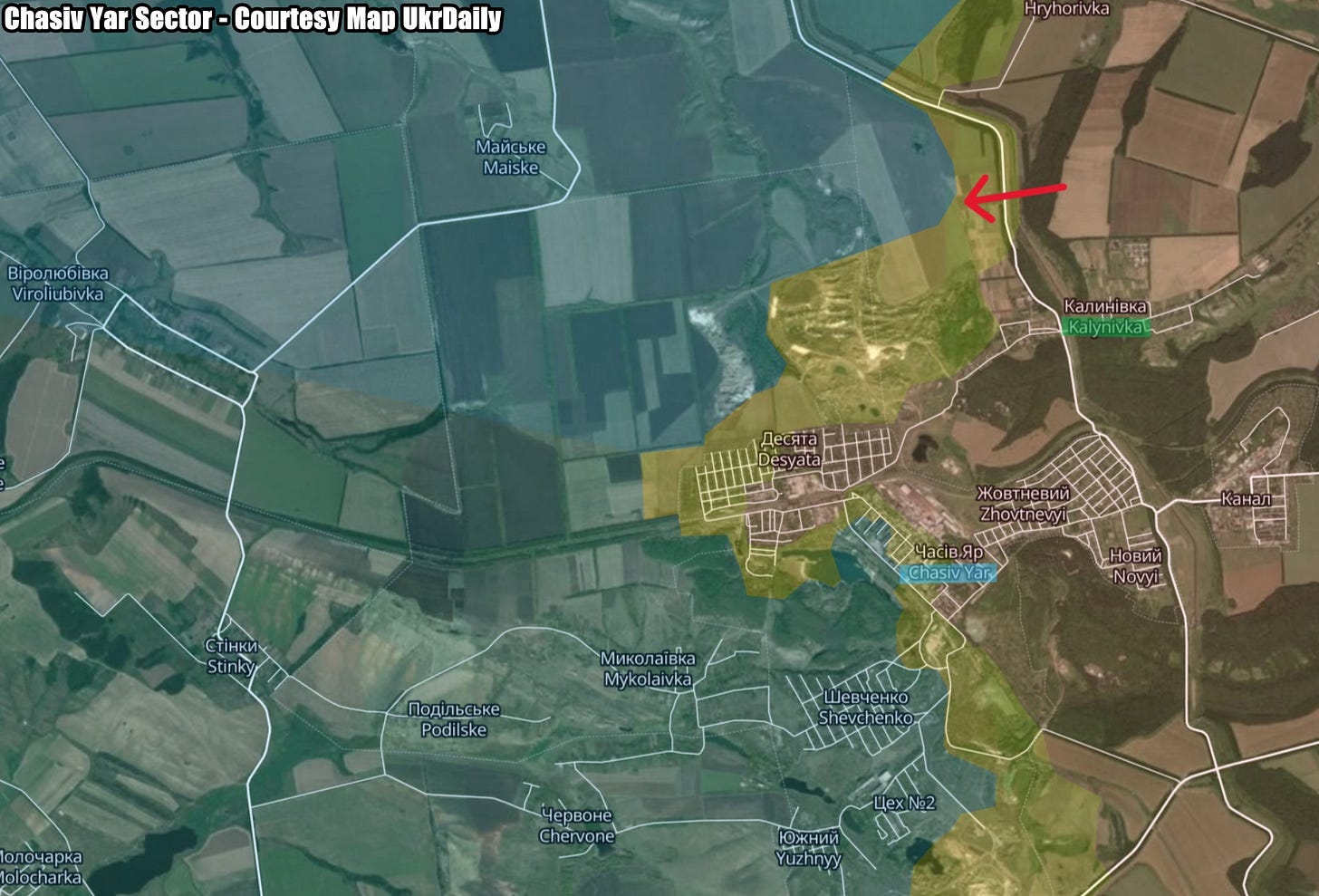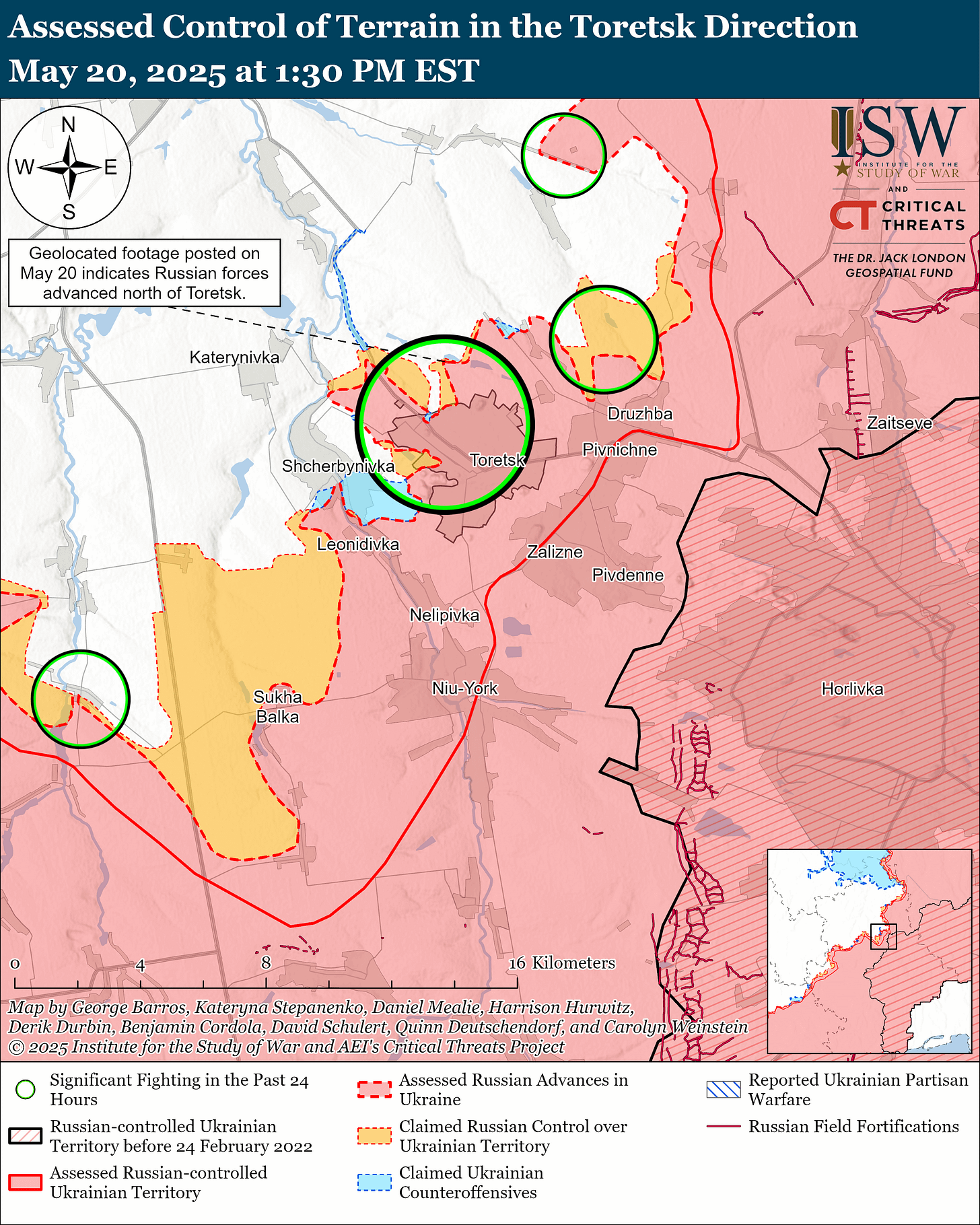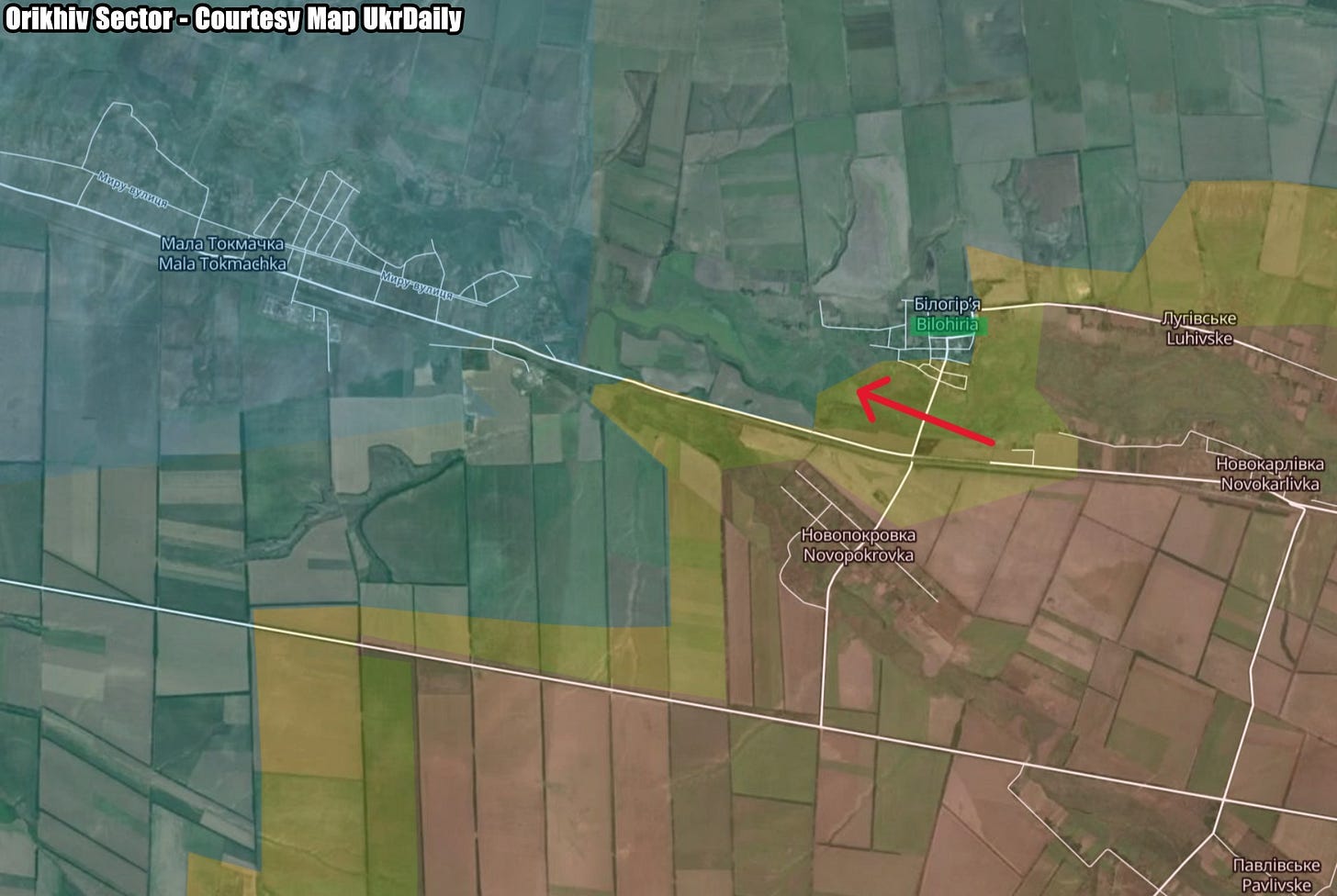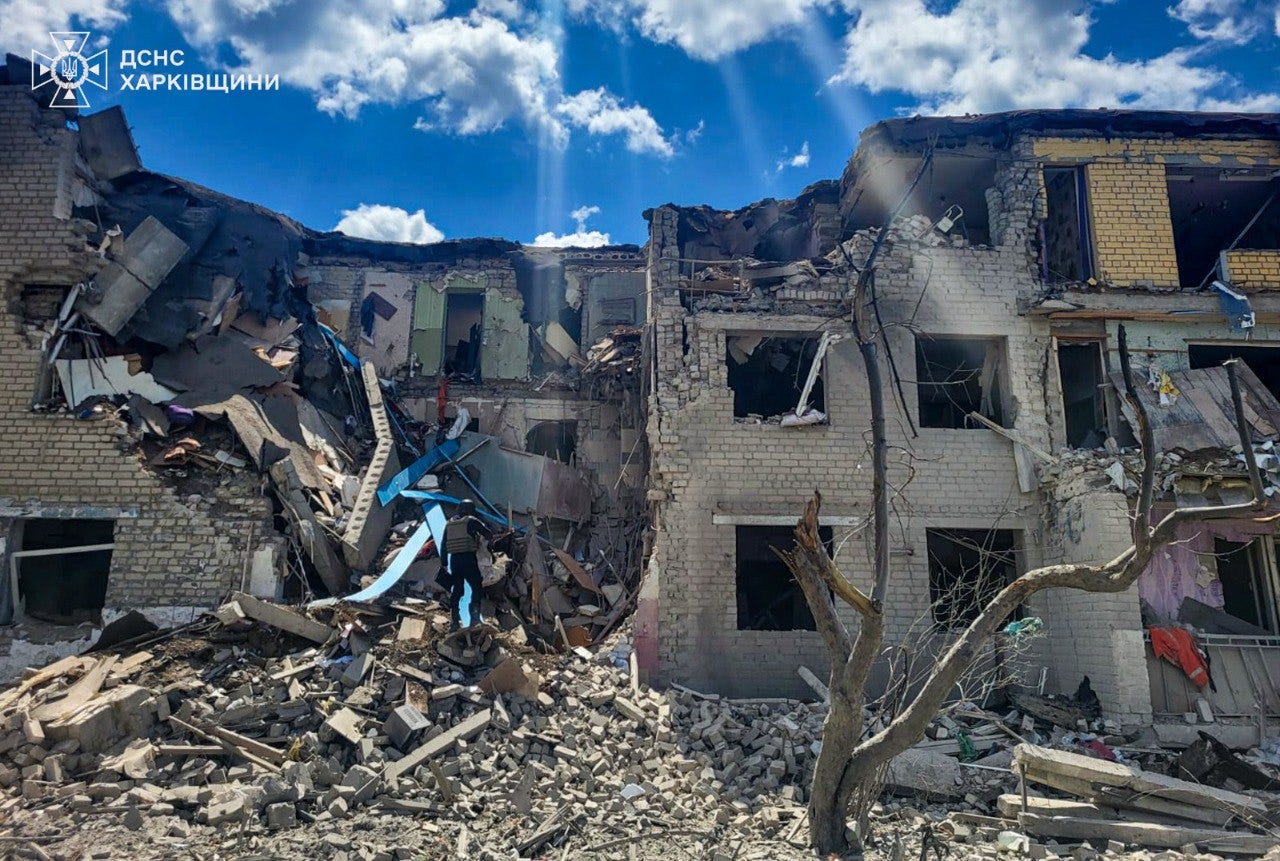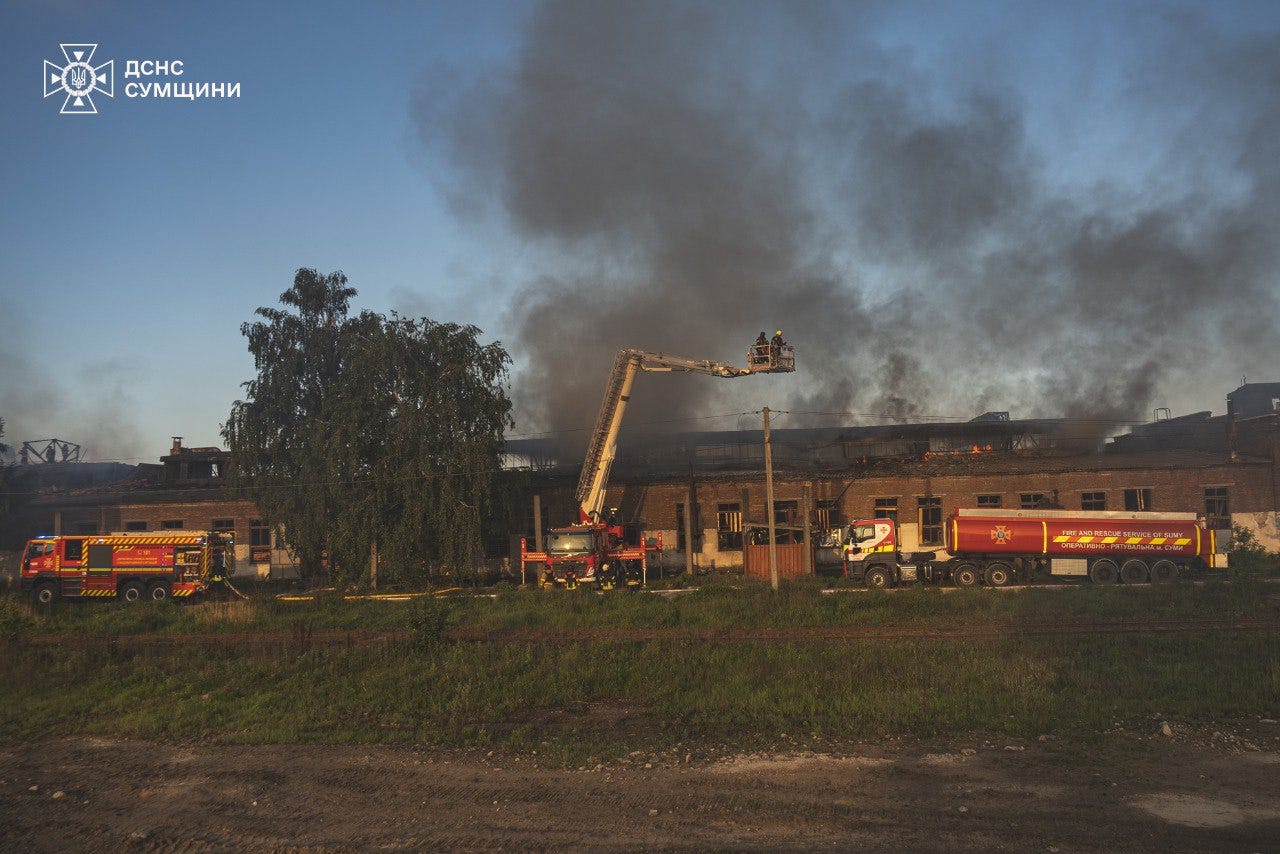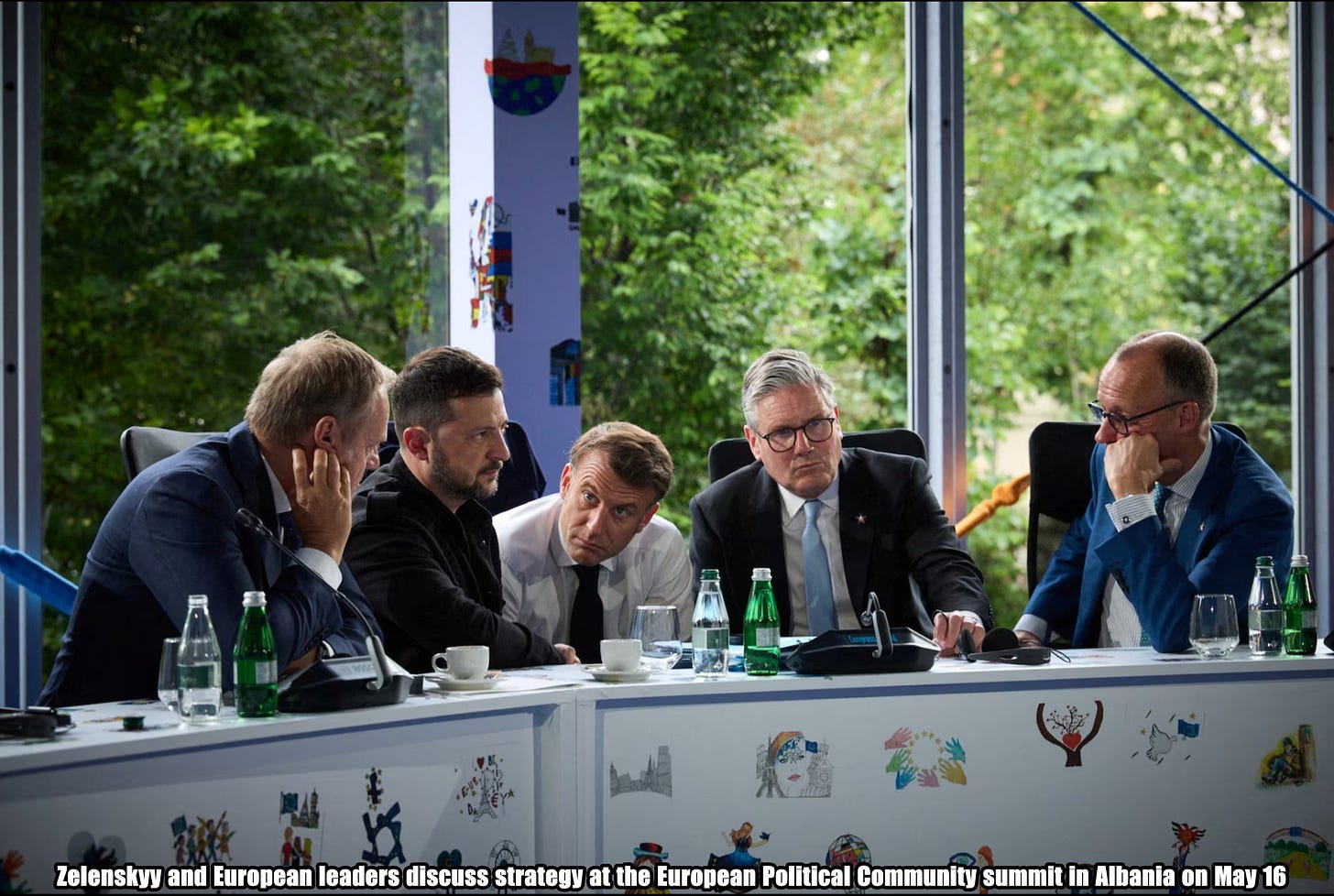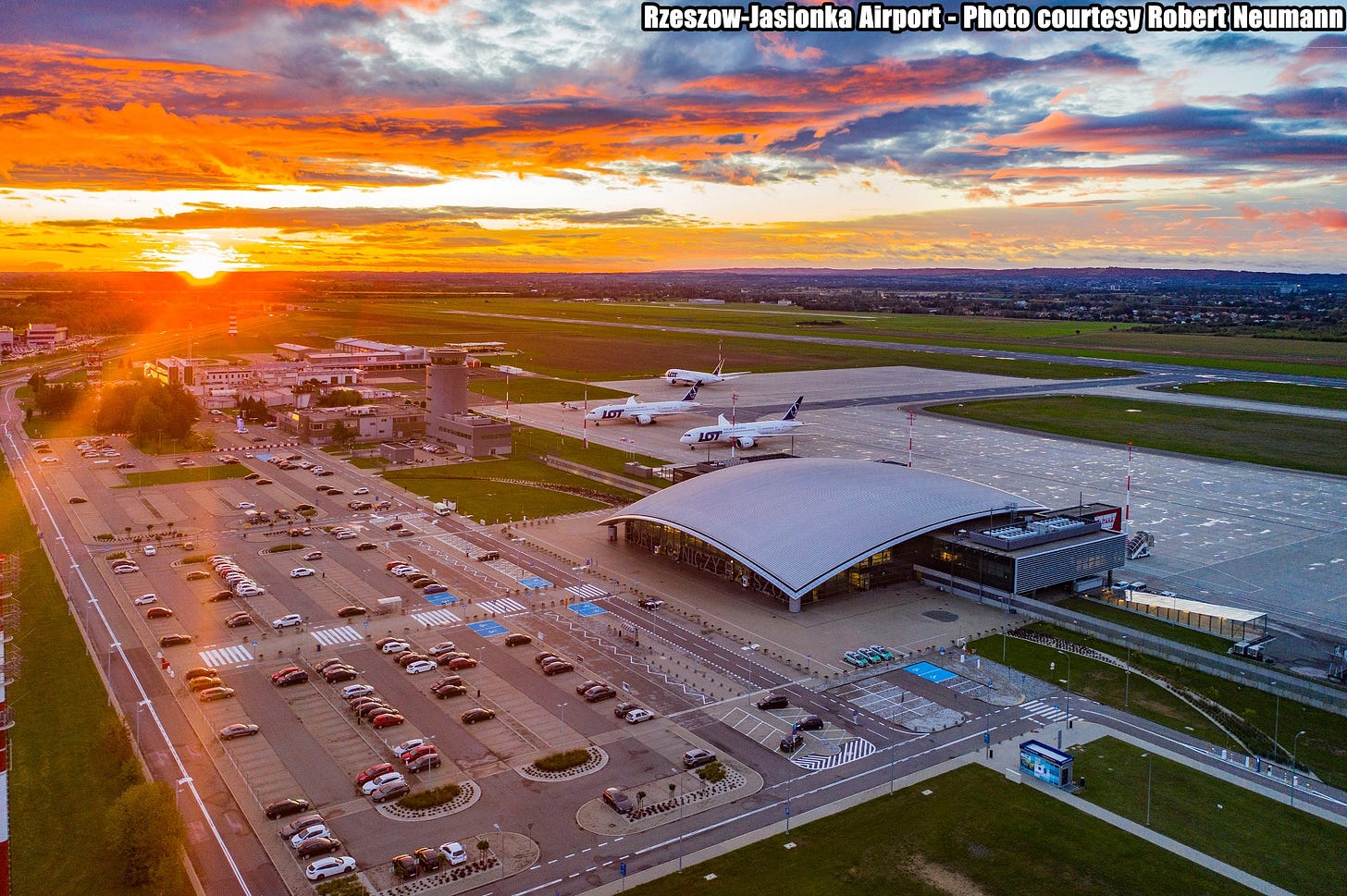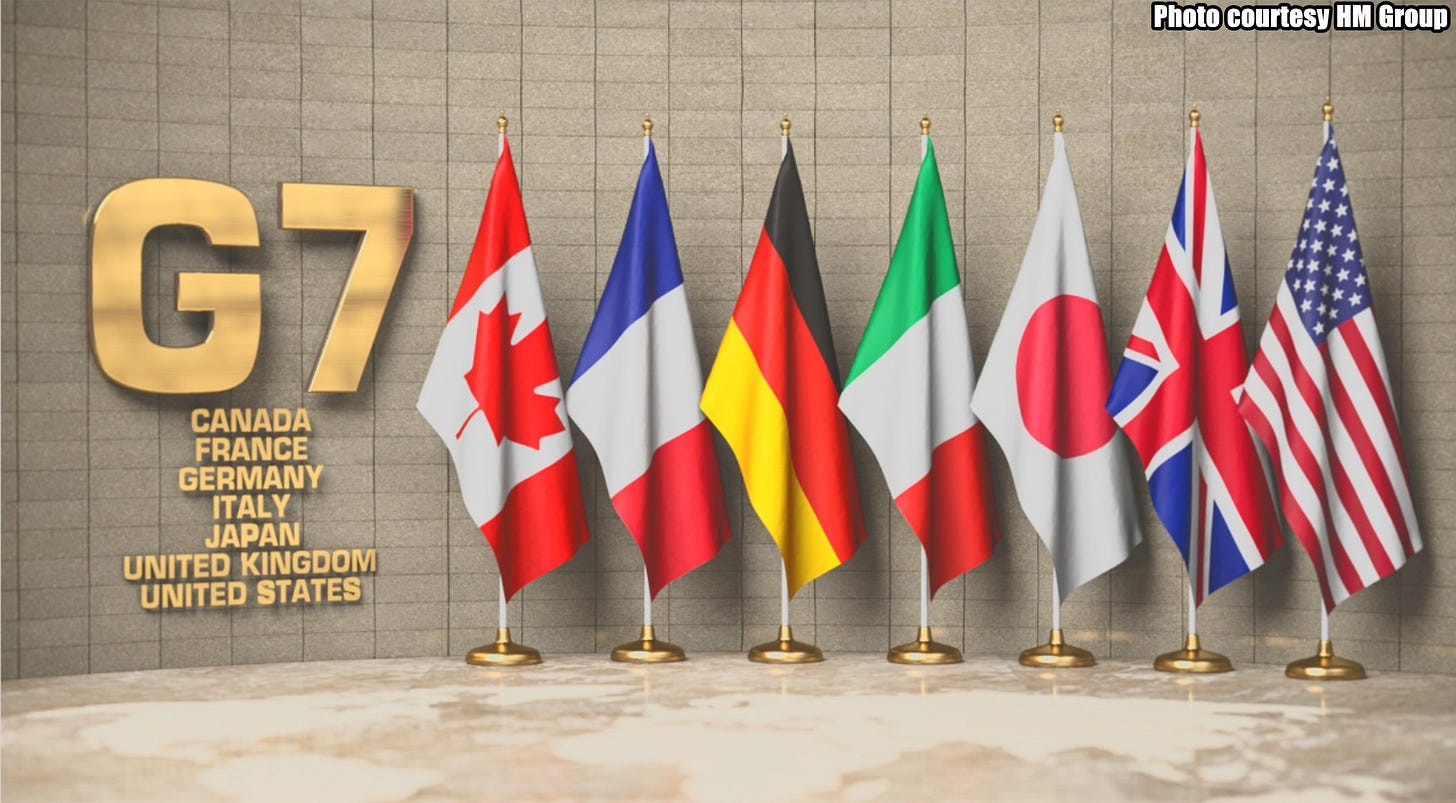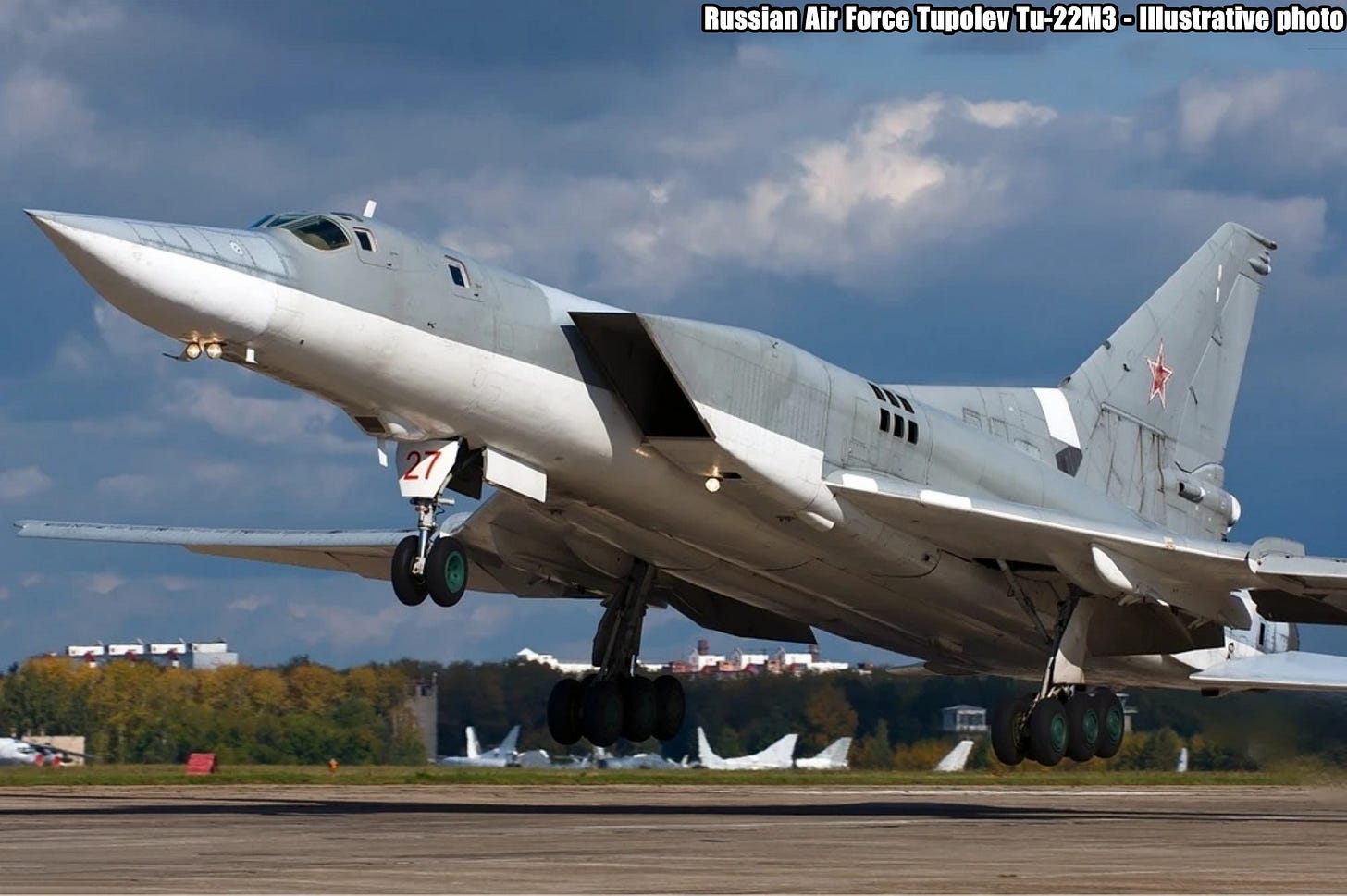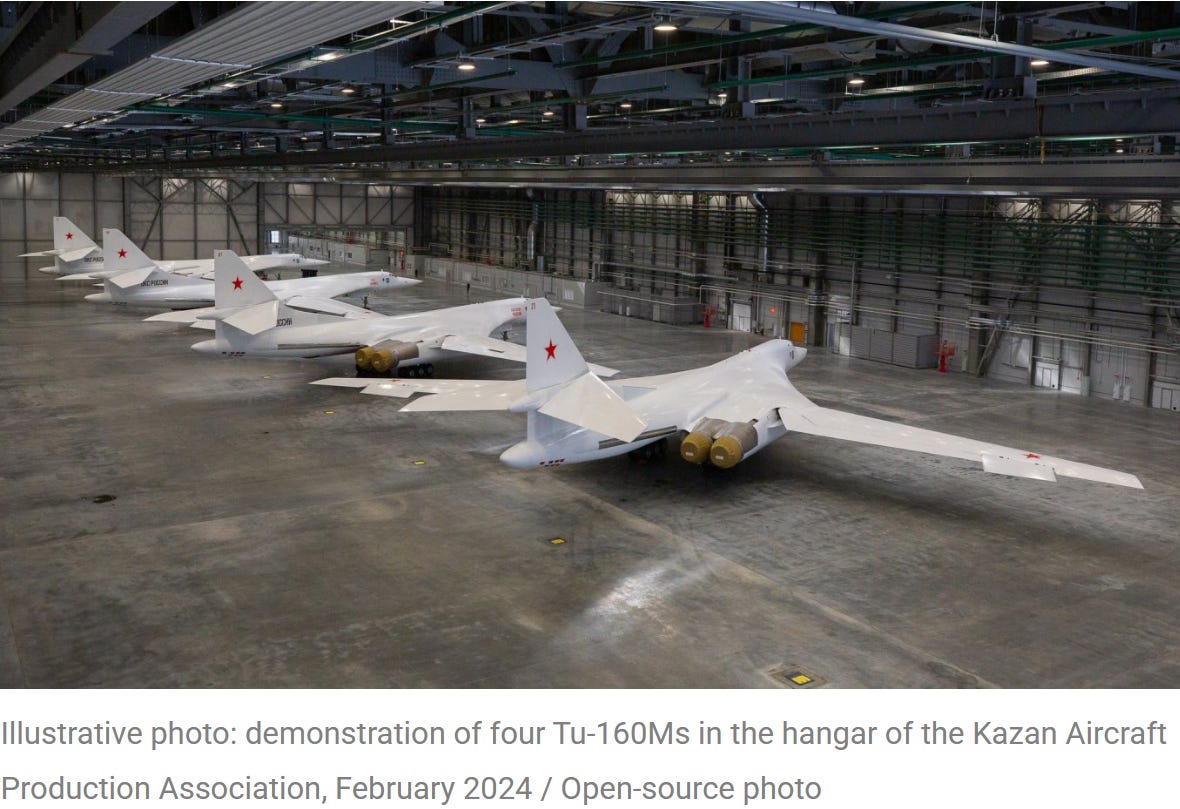Slava Ukraini! In early 2022 I began a Telegram channel aggregating news from a number of sources daily on the war in Ukraine. In June 2023 I began providing a daily draft for the Ukraine War Brief Podcast collecting news from over 70 sources daily, which formed the basis of the script. While the Podcast no longer exists I have continued to make this Brief available for my followers here on Substack for those who wish to keep up with the news from the war.
If you find the Brief informative I would appreciate it if you shared it with others.
All the latest news on the Russo-Ukraine War 6 days per week
ALONG THE CONTACT LINE
GSAFU Morning Report
For: May 21, 2025
The General Staff of the Armed Forces of Ukraine in its Operational Information update at 08:00 on May 21 stated that day 1183 of the full-scale invasion of the Russian Federation against Ukraine had begun.
The situation on the line of combat remains tense in some sectors. Ukrainian defenders continue to actively counteract the Russian aggressor, causing them significant losses in personnel, equipment and technology. Exhausting the enemy along the entire front line and continuing to disrupt the plans of Russian occupiers to advance deeper into the territory of Ukraine.
During the past day,164 combat engagements took place.
Over the past 24 hours, the enemy carried out 1 missile strikes, 70 air strikes, used 3048 attack drones and fired approximately 5,200 artillery shells across the positions of Ukrainian forces and civilians.
Air Force Daily Report
63 ENEMY UAVS DESTROYED
➖➖➖➖➖➖➖➖➖
On the night of May 21 (from 00:30 on May 21), the enemy attacked with 76 Shahed attack UAVs and simulator drones of various types from the directions: Kursk, Orel, Bryansk - Russia.
The air attack was repelled by aviation, anti-aircraft missile troops, electronic warfare and unmanned systems units, and mobile fire groups of the Defense Forces of Ukraine.
As of 09:00, air defenses neutralized 63 enemy Shahed UAVs (and other types of UAVs) in the east, north, and center of the country. 22 were shot down by fire weapons, 41 were lost/suppressed by electronic warfare (EW) (without negative consequences).
As a result of the enemy attack, the Kharkiv and Sumy regions suffered.
Combat Operations in the Russian Federation
The Institute for the Study of War (ISW), a US based think tank, in its May 20 Russian Offensive Campaign Assessment reported that:
Sumy - Kursk Border: Ukrainian forces reportedly continued limited ground attacks in Kursk Oblast on May 20 but did not advance.
Russian milbloggers claimed that Ukrainian forces conducted limited attacks near Tetkino and Volfino (east of Tetkino).
Belgorod Incursion: Fighting continued in the northwesternmost Belgorod Oblast on May 20.
A Russian milblogger claimed on May 19 that Russian forces pushed Ukrainian forces from Demidovka and Popovka (both northwest of Belgorod City) and advanced west of Prilesye (south of Demidovka).
A Russian milblogger claimed that Ukrainian forces attacked near Demidovka and Popovka.
The Khortytsia operational-strategic group
(Responsible for the northeastern part of Ukraine. )
Sumy Sector: Russian forces recently advanced in Sumy Oblast.
Geolocated footage published on May 19 shows that Russian forces advanced within southwestern Loknya (northeast of Sumy City) and seized the fields west of the settlement.
Kharkiv Sector: Russian forces recently advanced in northern Kharkiv Oblast.
Geolocated footage published on May 20 indicates that Russian forces recently advanced across the Vovcha River in northwestern Vovchansk (northeast of Kharkiv City), but it is unclear if Russian forces maintain positions in this area.
Chasiv Yar Sector: Russian forces recently advanced in the Chasiv Yar direction.
Geolocated footage published on May 20 shows that Russian forces recently advanced north of Kalynivka (north of Chasiv Yar).
Toretsk Sector: Russian forces recently advanced in the Toretsk direction.
Geolocated footage published on May 19 indicates that Russian forces recently advanced in western Toretsk and east of Nova Poltavka (west of Toretsk) along the T-0504 Pokrovsk-Kostyantynivka highway.
Additional geolocated footage published on May 20 indicates that Russian forces recently marginally advanced north of Toretsk.
The Tavria operational-strategic group
(Responsible for the central-eastern and southeastern part of Ukraine.)
Orikhiv Sector: Russian forces recently advanced in the Orikhiv direction.
Geolocated footage published on May 19 indicates that Russian forces recently advanced southwest of Bilohirya (southeast of Orikhiv).
The Odesa operational-strategic group
(Responsible for Kherson, Qırım, (also known as Crimea) and the Black Sea.)
There have been no major changes to the combat environment since our last report.
TEMPORARILY OCCUPIED TERRITORIES
Nothing major to report.
THE HOME FRONT
2 killed, 23 injured in Russian attacks on Ukraine over the past day.
Russian attacks across Ukrainian regions killed at least two civilians and injured at least 23 over the past day, the Kyiv Independent reported citing regional authorities on May 21.
Moscow's forces launch air strikes, drone attacks, and artillery strikes against Ukrainian towns and villages on a daily basis, regularly inflicting civilian casualties.
A civilian was injured during a Russian attack against Myrnohrad in Donetsk Oblast, Governor Vadym Filashkin reported.
Russian forces attacked the city of Kharkiv and six towns and villages in Kharkiv Oblast, Governor Oleh Syniehubov said. Six people were injured, including three women wounded during a Russian attack on Kupiansk.
Ten people were injured during Russian strikes in Kherson Oblast, said the regional governor, Oleksandr Prokudin.
Two people — a 30-year-old man and his 13-year-old son — were injured during a Russian drone attack against the Boryspil district in Kyiv Oblast, Governor Mykola Kalashnyk said.
Russian attacks against Sumy Oblast killed two civilians and injured five, the regional military administration said. The two fatalities were reported following a Russian drone strike and an air strike against the Yunakiv community.
RUSSIAN WORLD
Russian semiconductor plant making missile, jet parts hit in Ukrainian attack.
Ukrainian drones struck Russia's Bolkhov semiconductor plant in Oryol Oblast, which is producing parts for Sukhoi warplanes and Iskander and Kinzhal missiles, the General Staff of Ukraine's Armed Forces reported on May 21.
The statement comes after Russia claimed to have downed over 150 Ukrainain drones overnight in multiple regions, including 53 in Oryol Oblast.
The region's governor, Andrey Klychkov, initially reported no damage or casualties, but later said that the semiconductor plant and several residential buildings were damaged.
Ukrainian Telegram channel Supernova+ shared what it claimed to be footage of the burning and damaged facility.
Ten drones hit the plant's premises, resulting in a fire, the General Staff reported. The full consequences of the attack are being determined.
The plant has been sanctioned by the U.S. since last year over its role in the Russian military-industrial complex.
The Bolkhov plant is one of Russia's leading producers of semiconductor devices and components, focusing on diodes, microcircuits, optoelectronic switches, and more, the General Staff said.
The factory supplies at least 19 Russian plants involved in the production of Sukhoi planes or Iskander and Kinzhal ballistic missiles. Despite the sanctions, it produces almost 3 million devices per year, according to the Ukrainian military.
RELATED INTERNATIONAL NEWS
EU officially agrees on 150-billion-euro defense fund.
The EU has reached an agreement to launch a common defense fund of 150 billion euros ($170 billion) called SAFE, the Council of the EU announced on May 21.
"The more we invest in equipping our armies, the better we will deter those who wish us harm," the council said on social media.
"SAFE is the first major EU program to increase investment in European defense capabilities, which becomes a reality."
The move comes as Europe faces an increasingly challenging security environment, with Russia continuing to wage its war against Ukraine and U.S. security commitments to its European partners growing uncertain.
The new SAFE mechanism, proposed by the European Commission in March, will allow member states to borrow money from the EU to purchase weapons and military equipment.
EU members reached a preliminary agreement on the initiative on May 19, an EU official told the Kyiv Independent at the time. The program will be formally adopted on May 27.
"SAFE is an advantageous, low-interest, multi-year loan guaranteed by the EU budget," the council said. "The program is also about simpler and accelerated procedures for joint defense procurement."
Some non-EU countries will reportedly be able to participate in the program if their expenditures do not exceed 35% of the cost. Despite agreement on the need to hike defense spending, several EU states have previously disagreed on whether these efforts should be coordinated with nations outside of the bloc, such as the U.K. or Turkey.
The 150-billion-euro fund was proposed as part of the European Commission's ambitious ReArm Europe program, which would also allow member states to spend an additional 650 billion euros ($730 billion) on defense by loosening fiscal rules.
Some of the funds raised under the ReArm Europe program will be allocated to military support for Ukraine, EU Defense Commissioner Andrius Kubilius said in a media interview in May.
Ukraine pitches tougher Russia sanctions plan to EU as US wavers.
Ukraine will ask the EU next week to consider big new steps to isolate Moscow, including seizing Russian assets and bringing in sanctions for some buyers of Russian oil, as U.S. President Donald Trump has backed off from tightening sanctions, Reuters reported on May 21.
A previously unreported Ukrainian white paper to be presented to the EU calls for the 27-member bloc to take a more aggressive and independent position on sanctions as uncertainty hangs over Washington's future role.
Among 40 pages of recommendations were calls to adopt legislation that would speed up the EU's seizure of assets from sanctioned individuals, and send them to Ukraine. Those under sanctions could then seek compensation from Russia.
The EU should consider a range of steps to make its sanctions apply more forcefully beyond its own territory, including targeting foreign companies that use its technology to help Russia, and "the introduction of secondary sanctions on purchasers of Russian oil".
Such secondary sanctions, which could hit big buyers such as India and China, would be a major step that Europe has so far been reluctant to take. Trump had publicly discussed this before taking the decision not to act for now.
The white paper also calls for the EU to consider using more majority-rules decision making over sanctions, to prevent individual member states from blocking measures that otherwise require unanimity.
After speaking to Putin on Monday, Trump opted not to impose fresh sanctions on Russia, dashing hopes of European leaders and Kyiv who had been lobbying him for weeks to ratchet up pressure on Moscow.
Trump spoke to Ukrainian and European leaders after his call with Putin and told them he didn't want to impose sanctions now and to give time for talks to take place, a person familiar with conversation told Reuters.
The EU and Britain imposed additional sanctions against Russia on Tuesday anyway, saying they still hope Washington will join them. But Europeans are openly discussing ways they can maintain pressure on Moscow if Washington is no longer prepared to participate.
Publicly, Ukraine has tried to avoid any hint of criticism of Washington since President Volodymyr Zelenskyy received a dressing down from Trump in the White House in February.
The sanctions white paper includes a stark assessment of the Trump administration's commitment to coordination efforts so far.
"Today, in practice, Washington has ceased participation in nearly all intergovernmental platforms focused on sanctions and export control," it said.
Washington had slowed work in the monitoring group for enforcing price caps on Russian oil, dissolved a federal taskforce focused on prosecuting sanctions violations and reassigned a significant number of sanctions experts to other sectors, it added.
It noted that two potentially major U.S. sanctions packages had been drawn up - one by the government and another by pro-Trump senator Lindsey Graham - but that it was "uncertain" whether Trump would sign off on either of them.
Uncertainty over the U.S. stance had slowed the pace of economic countermeasures and multilateral coordination, but "should not prompt the European Union to ease sanctions pressure", it said.
"On the contrary, it should catalyse the EU to assume a leading role in this domain."
Ukraine is worried that Washington peeling away from the Western consensus on sanctions could also cause vacillation in the EU, which traditionally requires consensus for major decisions.
"American withdrawal from the sanctions regime (would) be a huge strike on the unity of the EU. Huge," a senior Ukrainian government official told Reuters.
Still, U.S. sanctions relief for Russia would not spur a significant return of foreign investors and investment if Europe held firm, said Craig Kennedy, a Russian energy expert at the Davis Center, Harvard.
"Europe holds a lot more cards than you'd think," he said.
Poland to try suspect in alleged Russian plot to assassinate Zelenskyy.
Polish authorities have indicted a man charged with planning to help Russian foreign intelligence services prepare a possible attempt to assassinate Ukraine's president, Reuters reported citing Polish prosecutors on Tuesday.
The man, identified as Pawel K., was arrested in April 2024 after cooperation between Polish and Ukrainian prosecutors, and faces up to eight years in prison.
According to prosecutors, he had declared his readiness to act for the military intelligence of the Russian Federation and established contacts with Russians who were directly involved in the war in Ukraine.
"The activities were to help, among other things, in the planning by the Russian special services of a possible assassination attempt on the life of ... the President of Ukraine Volodymyr Zelenskyy," the prosecution said in a statement.
Pawel K.'s tasks included collecting and providing information on security at the Rzeszow-Jasionka Airport in southeastern Poland, prosecutors said.
Poland, a hub for Western military supplies to Ukraine, says it has become a major target of Russian spies, accusing Moscow and its ally Belarus of trying to destabilise it - accusations which the Kremlin has repeatedly denied.
US opposes joint G7 statement on further support for Ukraine.
The U.S. objected to the inclusion of clauses on "further support" for Ukraine in a joint statement during the meeting of the Group of Seven (G7) finance ministers in Canada, Politico reported on May 21, citing two undisclosed officials.
Canada, chairing the G7 group this year, is hosting a meeting of G7 finance ministers this week. The summit is a precursor to the main meeting of the G7 heads of state, which will take place on June 15-17.
Washington also refused to label Russia's full-scale invasion of Ukraine as "illegal" in the text, according to sources who spoke to Politico.
This is not the first time that the U.S. has blocked joint G7 statements in support of Ukraine and condemning Russia's war.
Washington previously did not support a joint statement condemning Russia's deadly attack on Sumy, which killed 35 people and injured 119 on Palm Sunday on April 13. The Trump administration also opposed a joint statement on the third anniversary of Russia's full-scale war and vetoed a proposal for a task force tracking the Russian "shadow fleet" of tankers.
Since taking office in January, Trump has upended years of U.S. foreign policy on the Russia-Ukraine war, resuming direct contact with Moscow while exerting pressure on Kyiv by pushing for a peace agreement with Russia on conditions favorable to the Kremlin.
During the recent talks in Istanbul between Russia and Ukraine on May 16, Moscow continued to press its demands for full control over the four partially occupied Ukrainian oblasts and the Crimean peninsula, as well as Ukraine's abandonment of its aspirations to join NATO.
Reacting to the Russian side's demands, President Volodymyr Zelenskyy said that Ukraine would never withdraw troops from its own territories.
MILITARY & TECH
Leaked Documents Reveal Russian Plans For Tu-95MS, Tu-160, and Tu-22M3 Modernizations.
Intercepted paperwork names exact factories and plants tasked with capital repairs of Tu-95MS, how many Tu-160 are being repaired right now and their completion status, and how many Tu-22M3s will be modernized, Defense Express reports.
Strategic aviation needs to keep enjoying high priority for the Russian armed forces that spend astronomical resources to maintain and even increase the number of long-range bomber aircraft in service.
This is particularly evident in the new investigation by the Dallas private analytics and reconnaissance company, where intelligence specialists broke down and published classified Russian documents on modernization and construction of Tu-95MS, Tu-160, and Tu-22M3 airborne missile carriers.
These papers reveal, for instance, that in March 2025, two Russian aircraft repair enterprises got commissioned a major overhaul of Tu-95MS bombers. The executors are the JSC 360 Aviation Repair Plant, located in Ryazan, and the PJSC Taganrog Aviation Science And Technology Complex Named After G.M. Beriev (TANTK Berieva). Both companies are involved in the repair and modernization of Tu-95MS on a regular basis, in particular, it was the TANTK Berieva that developed and carried out the Tu-95MSM modernization of this aircraft.
The cost of overhaul at each enterprise is different. For three aircraft, the plant in Ryazan set an estimated price of $131.66 million, while the one in Taganrog asked $184.76 million. That makes an average of $52.7 million to thoroughly repair one Tu-95MS. The total cost the Kremlin has to pay for all six missile carriers is $316.42 million, the deadlines remain unknown.
Also, on May 12–14, the Tupolev company top management had a tour to its main production enterprise, the Kazan Aviation Plant named after S. P. Gorbunov. By gaining access to this visit's agenda, the investigators learned about the progress of works on the Tu-160 and Tu-22M3M aircraft.
According to this intel, the plant is currently working on seven Tu-160 airframes with serial numbers 705, 801, 401, 703, 804, 904 and 905. Considering the purely symbolic quantities of these aircraft produced, each of these numbers really says a lot, as does the confirmation of them currently being located at the enterprise.
Furthermore, this directly indicates that out of 18 known operational Tu-160s, six are now out for repairs and modernization. In addition, Kazan is currently working on two new Tu-160s, which are being assembled under the "reproduction" program from Soviet-era scrap: these aircraft received numbers 904 and 905, respectively.
That’s it for today’s Brief folks if you would like to keep up with events in Ukraine daily please consider subscribing, it’s free!


